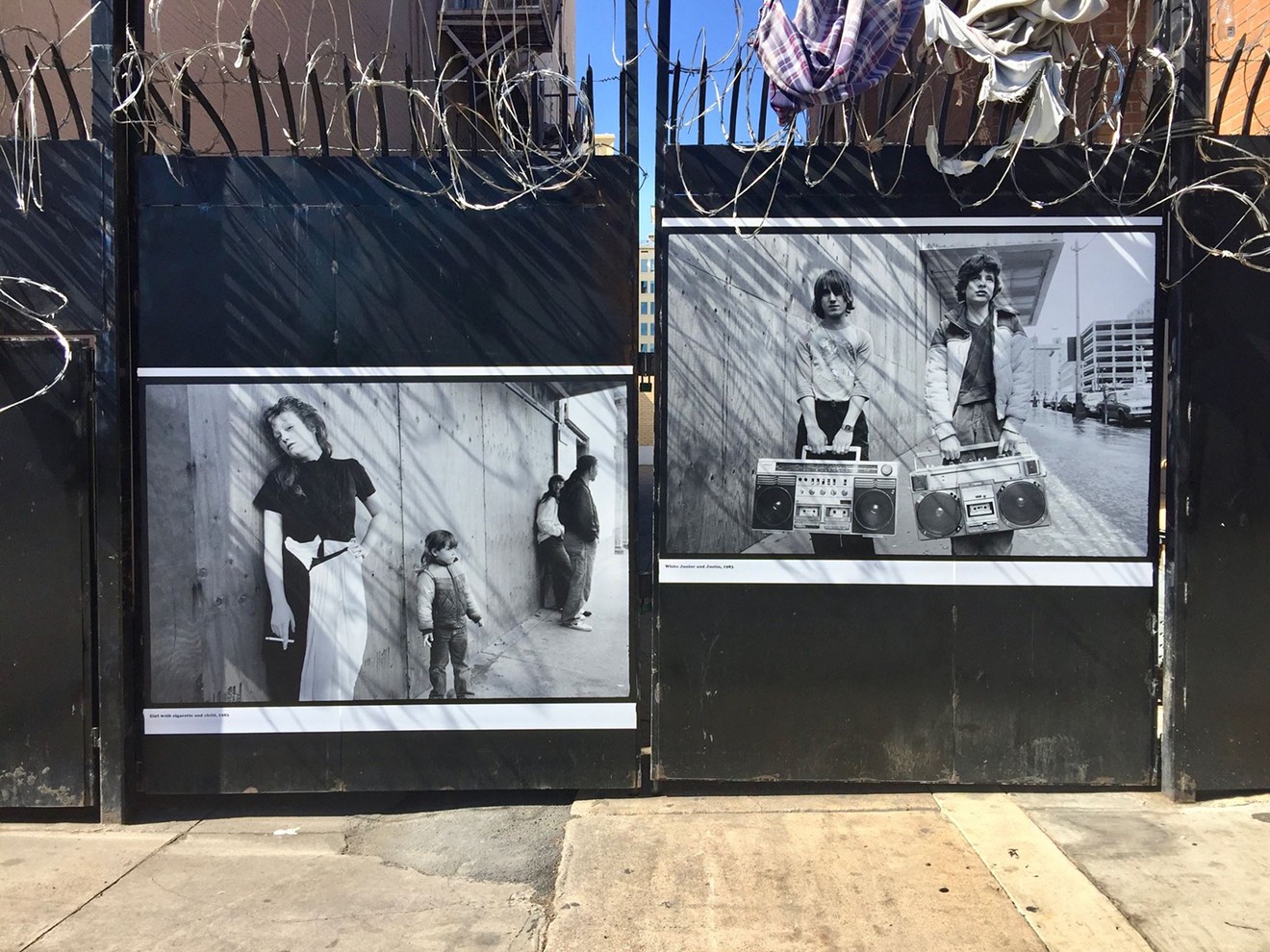Streetwise: Tiny and Runaways in Seattle (1983) is the first of four curated exhibitions in the series Looking for Home: A Yearlong Focus on the Work of Mary Ellen Mark. Designed by graphic artist Adrien Gardère in association with the Mary Ellen Mark Foundation, the series centers on a photogenic runaway named Erin Blackwell Charles, nicknamed Tiny — Mark’s primary subject for more than 30 years.
Mark, who died of cancer in 2015, intermittently documented Tiny’s life from ages 13 to 45 in striking black-and-white photographs. The first exhibition comes mainly from Mark’s seminal 1983 photo essay for Life magazine, “Streets of the Lost.”
The photographs grow larger as the exhibition moves from room to room and also broadens in scope, from the origin story of Tiny and her group of homeless friends in Seattle, all white, to Tiny as an adult with several of her 10 children, all mixed race.
Tiny's whiteness — shown in Dallas, where the homeless population is nearly 70 percent black — is surprising and discomfiting and challenges preconceived notions of what homelessness looks like.
tweet this
At once pugnacious and cherubic, Tiny’s face is a portal into the harsh reality of the streets where she lived and posed for Mark: at 13, dressed in a pieced-together Halloween costume to look like a French prostitute; at 15, pregnant on a mattress and bathed in beatific light. Her whiteness — shown in Dallas, where the homeless population is nearly 70 percent black — is surprising and discomfiting and challenges preconceived notions of what homelessness looks like.
“The experience of Tiny is metonymic of any human experience,” Alan Govenar, the museum’s founding director and co-curator, says of the work. He also provides context that the museum's education coordinator, Danielle Naylor, shared on a tour of the exhibition.
“The reason [Mark] picked Seattle for her photographs was because in 1983, Seattle was called ‘America’s Most Livable City,'" Govenar explains. "The point was to say, ‘Here are runaway white kids in America’s Most Livable City,’ from which one can make the jump to realize: ‘There are runaway kids in every city in America.’”
The Museum of Street Culture, which was announced in 2012 and opened Oct. 1, is the latest installment in Encore Park, an ambitious outreach project that aims to transform the buildings along Park Avenue and Young Street in downtown Dallas into a multivenue arts and culture campus.
Encore Park houses an amphitheater, sculpture wall and community garden alongside the project's ongoing renovation of the historic Art Deco building 508 Park, where Warner Bros. added sound to many of its films and recorded artists such as Robert Johnson and Bob Wills in the 1930s.
Govenar says roll-outs in spring 2018 will include responses to exhibitions from The Stewpot’s child, teen and adult programs. For example, the adults will produce a show that they came up with and named Think of Me as an Artist: Breaking Down Stereotypes of Homelessness, which comments on Mark’s series.
As a writer, filmmaker and photographer, Govenar says what interests him most is "not the perpetuation and explosion of street art, but the culture that created it — and how these cultures not only make street art, but also make the street come alive.
“It coincides with Dallas having a new vitality downtown,” he continues. “People are moving back into the streets. The street is the core of urban life, art and culture. It has immense history and immense presence.”
Looking for Home: A Yearlong Focus on the Work of Mary Ellen Mark is on view from noon to 1 p.m. Monday, Wednesday and Friday outdoors and inside The Stewpot, 1822 Young St., or by appointment by emailing [email protected].












